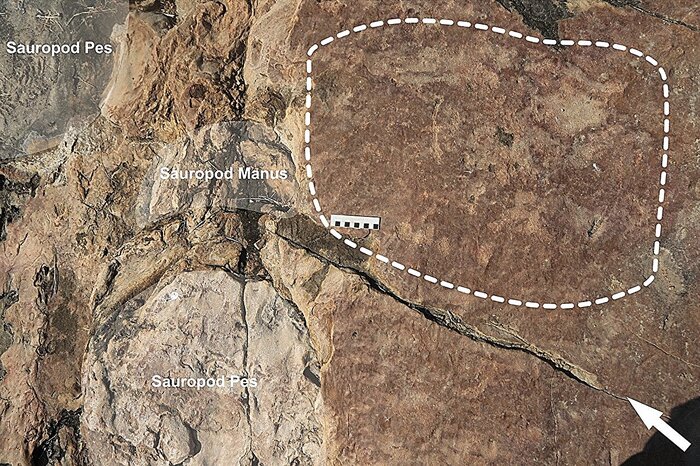A peculiar sauropod, which roamed present-day China at the end of the Jurassic
160 million years ago
, may have had the longest neck of any known dinosaur.
Sauropods are well known for their long necks, but
Mamenchisaurus sinocanadorum,
whose fossils have been the subject of extensive research
36 years
after its discovery, towered over the landscape with an abnormally long neck that measured
up to 15 meters.
Despite this record-breaking feature, Mamenchisaurus sinocanadorum is far from the largest dinosaur ever discovered due to its
relatively small tail and body
.
Scientists are trying to understand why this dinosaur might have had such an unusually long neck.
The reconstruction of one of those dinosaurs.
Professor Paul Barrett, a dinosaur expert at the Natural History Museum and an author of the study, says in a statement: "It appears that these necks were probably involved in
enhanced feeding
as in other sauropods, but it could have played more than one role."
"It could also have had to do with
sexual display
or used for neck-slapping contests between males fighting over mates and territory, similar to how giraffes behave today. But we can't say for sure. At this point , it is pure speculation as to why they developed necks of this length."
The study has been published in the
Journal of Systematic Paleontology
.
Was it for sex?
Sauropods are a group of very large herbivorous dinosaurs known for their
exceptionally long necks and tails
.
Notable members of this group include Diplodocus, Brachiosaurus, and the colossal Patagotitan, one of the largest animals that ever lived.
Scientists believe that sauropods evolved long necks as part of their feeding strategy, allowing them to consume a large amount of food in the immediate area around them
without spending a lot of energy
moving around.
Questions remain about how the strange proportions of Mamenchisaurus sinocanadorum allowed it to function.
"We really have no idea how that animal would have functioned mechanically."
Barrett says.
"It would take a lot of muscle to support a neck that size, and then there's the question of how you get air into your lungs and back up again."
Comparison with other dinosaurs and man.
"This could support the theory that these necks were a
sexually selected trait
where only the strongest and fittest dinosaurs that were able to hold up these giant necks in impressive displays were able to mate."
Only one specimen
of Mamenchisauridae sinocanadorum
has been found .
It is an incomplete skeleton consisting of the front end of the neck, including an impressive rib, and some skull bones, including the lower jaw.
they only found one
The lack of a complete skeleton made it difficult for scientists to have an idea of the overall size of this dinosaur, requiring another, better-preserved sauropod skeleton for comparison.
In 2012, a new type of giant sauropod from China called the Xinjiangtitan was discovered, which had a full neck.
The researchers compared incomplete fossils of Mamenchisauridae sinocanadorum with sauropods such as Xinjiangtitan to determine what the neck length would have been.
Fossils of Mamenchisauridae sinocanadorum were discovered in August 1987 when the broken end of
a huge
neck rib was found at a Shishugou Formation site in northwest China.
The peculiar sauropod roamed present-day China at the end of the Jurassic 160 million years ago.
The site is located in Xinjiang and is a rich repository of vertebrate fossils, including dinosaurs, pterosaurs, and crocodile-like animals dating from the Middle Jurassic to Late Jurassic.
To date, four additional sauropods have been named from this formation.
Mamenchisaurs were a group of unusually long-necked dinosaurs known primarily from China first discovered in the 1950s. Scientists have since unearthed other similar specimens, prompting a reassessment of the group to determine how their many related traits are related. different species.
Europe Press.
look also
The shocking television advertisement that decided the outcome of an election
look also
They had sex in a hotel and a crowd gathered on the street to see them
look also
To make money: 9 ways to sell the body to science
GML








